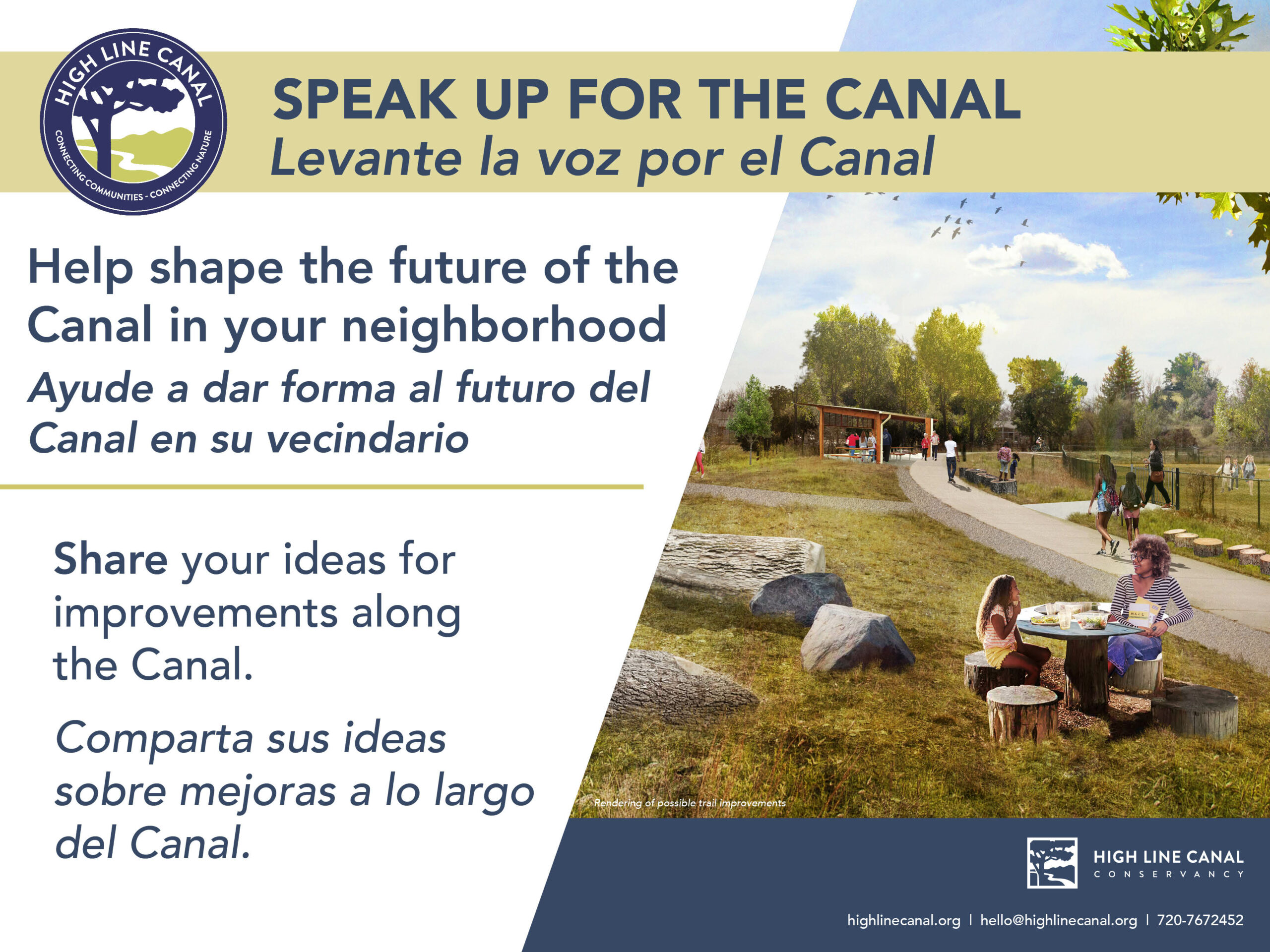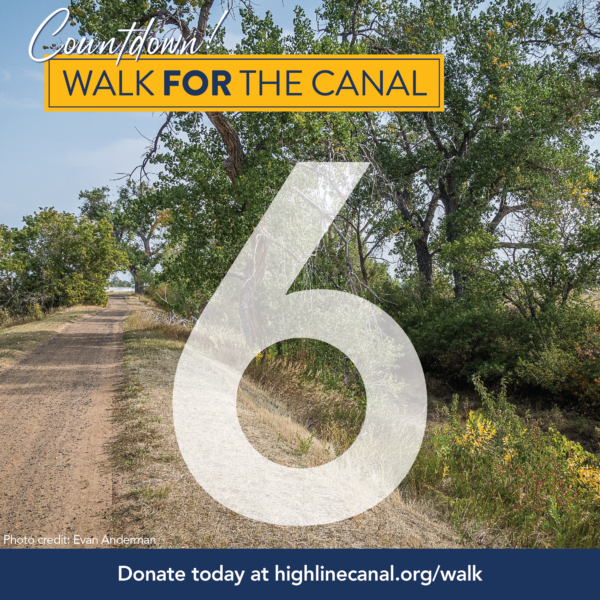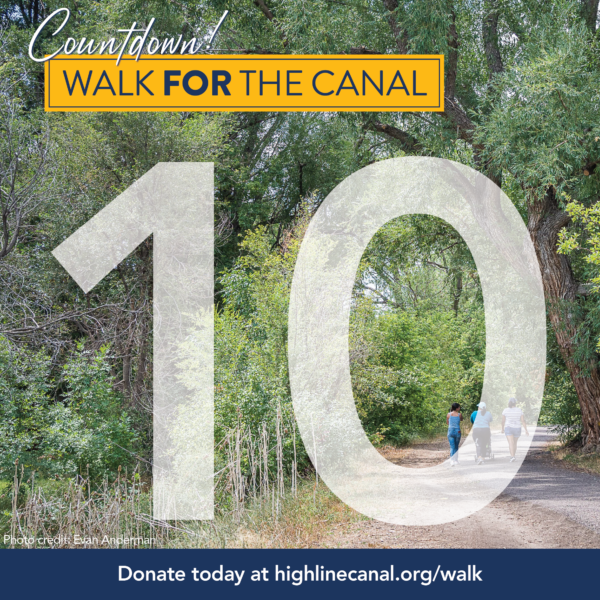WHEN WILL THE TREE CANOPY CARE PROJECT BEGIN?
As of June 2018, work has begun on the care and renewal of the tree canopy. The project will occur over a three-year period covering all five character zones to provide care and maintenance to the highest priority trees along the 71-mile corridor.
SOME OF THE TREES ARE MARKED. WHAT DO THE MARKINGS MEAN?
Arborists performing work on the Tree Canopy have documented the location and type of work needed for the trees utilizing GIS technology and a comprehensive data system. Trees that will be addressed will have a painted mark to provide a secondary confirmation to the scope of work that needs to happen on a specific tree. Tree maintenance work ranges from removal to a habitat prune, to a health or safety prune by a contracted arborist. Smaller trees that need attention will be serviced by Denver Water staff.
HOW WILL TREE CANOPY CARE AFFECT CANAL USERS?
Arborists working along the Canal will do their best to minimize disruptions along the trail while pruning or, in some cases, removing trees. However, in certain areas, there may be trail closures for short periods of time. Stay up to date on potential trail interruptions by checking highlinecanal.org/trail-updates or follow the Conservancy on Facebook and Twitter.
WHAT IS THE STATUS OF THE COTTONWOOD TREES?
Over 40% of the tree canopy is made up of cottonwood trees, many over 100 years old and nearing the end of their natural lifespan. While the cottonwoods are one of the Canal’s most treasured assets, they pose challenges for future re-planting because of their high levels of water consumption and relatively short lifespan. The canopy care project is focused on fostering a healthy and safe tree canopy, as well as extending the life of these aging trees. Ongoing tree care beyond this initial maintenance will be supported by the landscape design guidelines developed in The Plan. These guidelines address the Canal’s changing landscape and provide recommendations for new trees and vegetation, focusing on drought-tolerant and native species.
IS ANYONE DOING ANYTHING ABOUT THE RUSSIAN OLIVES ON THE CANAL?
Russian Olives are an invasive species that are present in the Canal corridor. The Conservancy will be starting the first large-scale Russian Olive removal project in 2021 in partnership with Mile High Youth Corp, clearing Russian Olive across over 13 miles of the Canal in Denver and Unincorporated Arapahoe County. This pilot project will inform future Russian Olive mitigation efforts.
WHAT’S HAPPENING WITH THE WOOD FROM THE TREES THAT ARE PRUNED OR REMOVED?
Depending on the location and the condition of the wood, there are several things that could happen. It could remain in place as wildlife habitat, it could be mulched and brought to a mulch-yard for use or resale, or it could be brought to a composting facility. Considerations will also be made to re-purpose tree wood for future trail signage, nature play areas, benches and other enhancements along the Canal.
I AM CONCERNED ABOUT THE CONDITION OF A TREE ALONG THE HIGH LINE CANAL. WHAT DO I DO?
Over 500 trees have been identified and prioritized based on public safety, tree health, wildlife habitat, and other important factors (per the 2016 Tree Inventory). These trees are visibly marked. If there is a tree that is not marked and causing concern, please note the following steps:
Determining ownership
If a property owner is concerned about a tree potentially causing damage to their property, it is the property owner’s responsibility to first accurately determine the property boundaries and whose tree the property is on. Property owners are advised that fence lines are not always an accurate indicator of the property line. If you are concerned about a Denver Water tree and it is not marked, or if it is smaller than 12 inches in diameter, please refer to the below scenarios to determine what you can do:
An unhealthy tree or limb is hanging over or has fallen onto the trail or an occupied structure (i.e. house)
If there is a public safety risk please call Denver Water at (303) 893-2444 during regular business hours, Monday-Friday, 7:30 am-5:30 pm. After hours emergencies call (303) 628-6801. Staff will determine any appropriate action if needed.
Unhealthy tree or limb that has fallen or is hanging over the Canal or to the side of the trail
Because these trees do not pose a significant safety concern, and the debris is primarily an aesthetic issue, these are lower priority than trees hanging over the trail. Prior to running water through the Canal, Denver Water staff will remove debris in the Canal that could prevent the flow of water.
Unhealthy tree or limb that is hanging over private property
Colorado Law allows a property owner to cut overhanging limbs at their property line. The property owner is responsible for removing any debris resulting from pruning the tree. If a prune at the property line is not sufficient, please call Denver Water at (303) 893-2444 during regular business hours Monday-Friday, 7:30 am-5:30 pm. Staff will determine any appropriate action needed.
WHO DO I CALL IF I AM CONCERNED ABOUT TREES ALONG THE CANAL CORRIDOR?
For all tree-related questions and non-emergency concerns, contact the High Line Canal Conservancy:
(720) 767-2452, Monday-Friday, 9am-5pm







